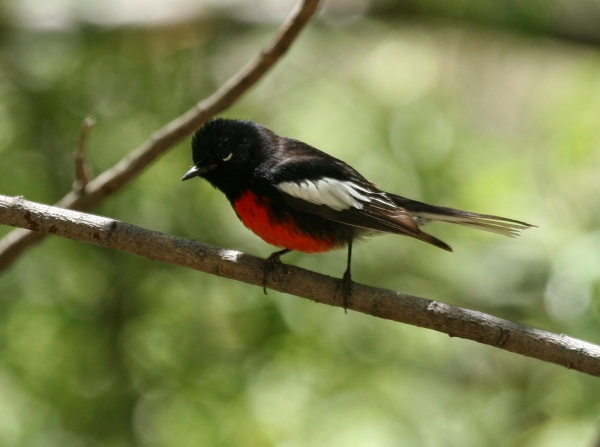
Another warbler, but this one is real.
The painted redstart (Myioboris pictus) of the U.S. Southwest and Central America is a famous singer, unusual among warblers because both males and females sing and perform duets during courtship.
Black and red with white accents, he has a white spot below his eye that’s similar in shape and position to the eye-black that football players wear to reduce glare. I wonder if it has the same function.
Though not closely related to the American redstart, he also has white edges on his tail and flairs them as his eastern namesake does. But he’s not a redstart, he’s a “whitestart” with many Central and South American relatives in the Myioborus genus.
Redstart? Whitestart? What shall we call him?
He’s always “Painted.”
(photo from Wikimedia Commons. Click on the image to see the original)
